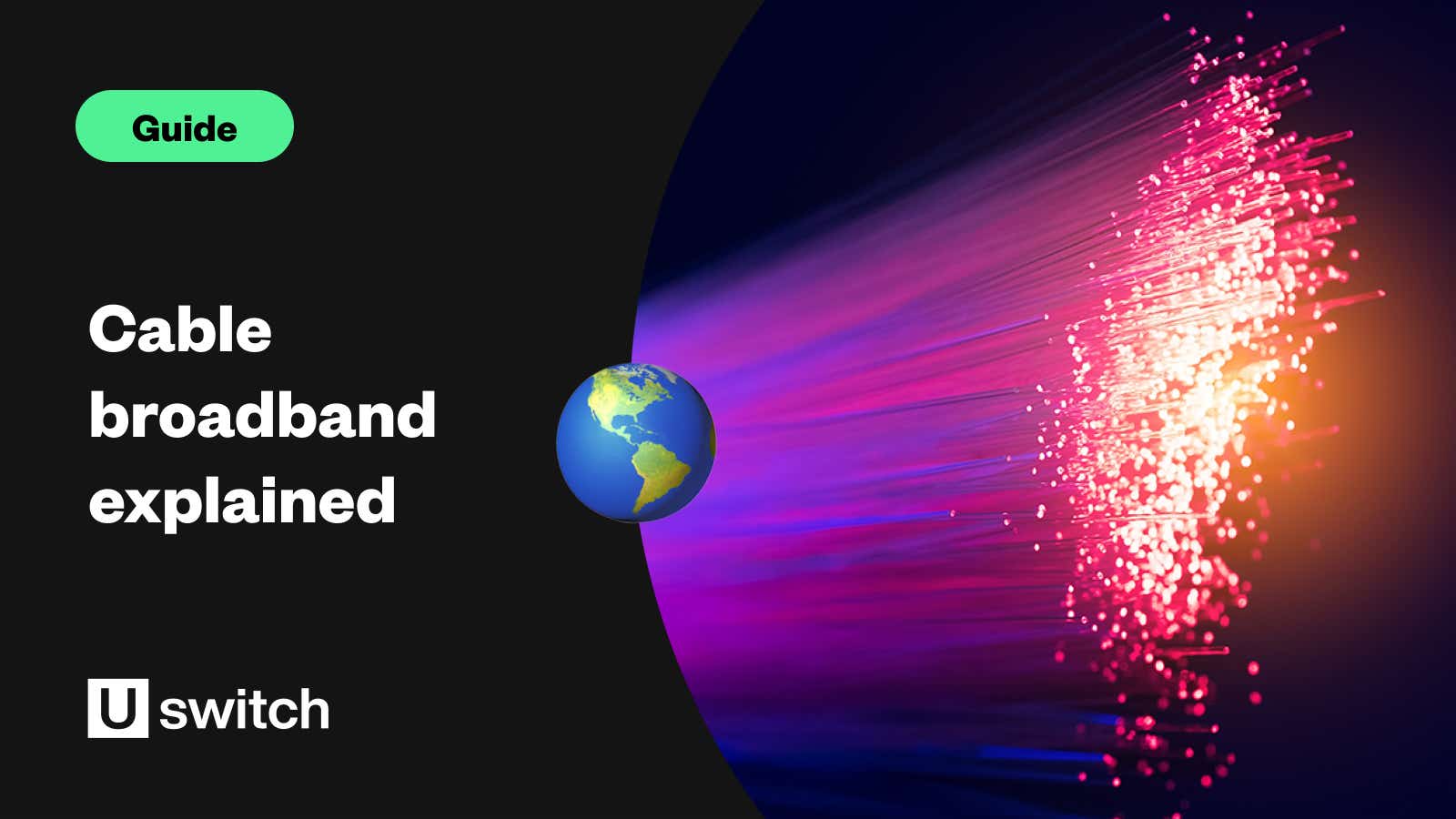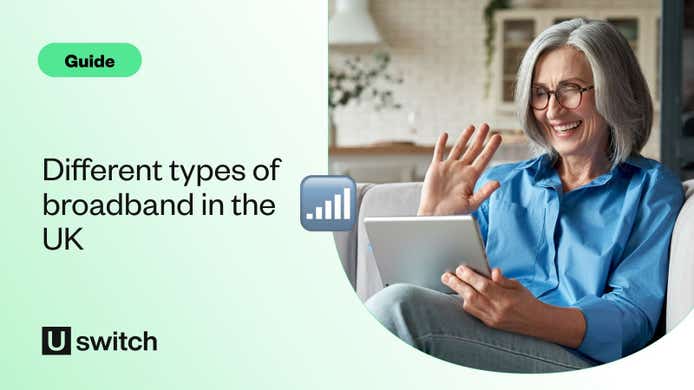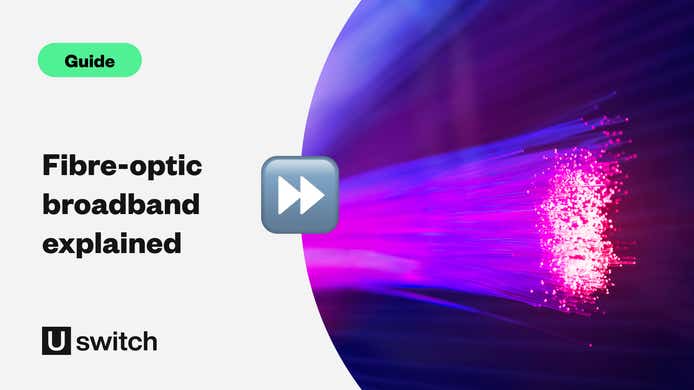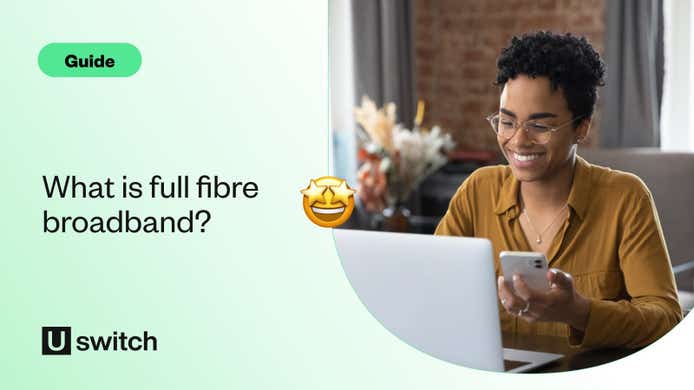While fibre broadband is offered by many internet service providers to deliver superfast and ultrafast broadband connections, cable broadband is something specific to key providers like Virgin Media who run on their own network.
So what’s the difference between fibre and cable broadband?
Fibre broadband
Fibre broadband is a fairly inclusive term. It means that fibre cables are used at some point throughout the connection from your provider to your home. Unless you have ADSL broadband which is supplied entirely through the original copper telephone network, you will likely have some sort of fibre broadband.
Run a quick speed test to see what connection you have in your home.
To achieve those top-end speeds, you will need to have fibre-to-the-premises (FTTP) broadband — sometimes also called fibre-to-the-home (FTTH) — which means your connection is entirely serviced with fibre optic cables, from the exchange to your street cabinet and then also from the street cabinet to your home.
FTTP broadband is currently only available through BT and Hyperoptic, with limited availability. If you’re able to get FTTP broadband, you’ll be able to access speeds well over 200Mbps.
Cable broadband
Cable broadband connects your home to a fibre cabinet in your area. However, instead of using copper wires, cable broadband uses coaxial cables to connect to the cabinet, giving you a much faster internet connection than the traditional copper phone line cables used for ‘superfast’ broadband connections (up to 60Mbps).
So while cable broadband isn’t quite as fast as a full fibre connection, it is significantly faster than ‘fibre to the cabinet’ (FTTC) broadband.
What is a coaxial cable?
Coaxial cable consists of a copper wire surrounded by a concentric conducting shield, separated by an insulating material. Also known as coax cable, this type of cable is ideal for carrying high-frequency electrical signals with low losses.
Coaxial cables are an efficient upgrade from traditional copper wires as their shielded design allows the centre conductor wire to transmit data quickly while being protected from external interference or damage.
Coaxial cable is much more affordable for providers to install than fibre-optic cabling but can result in signal loss over longer distances. They are easy to install and very durable, making them an efficient middle ground between copper wires and fibre-optic cables.
Cable broadband speeds
Because of the improved performance of coaxial cables, cable broadband connections offer significantly faster broadband speeds than those ‘superfast’ broadband connections that still use copper wire. Cable broadband speeds can start from 36Mbps and even exceed 300Mbps on higher-end packages.
To find out more about internet connection speeds and download times, check out our guide to broadband download times to see what you can expect with that level of speed.
Virgin Media broadband
The nation’s cable broadband infrastructure is dominated by Virgin Media, which has operated on its own network since it took over the NTL: Telewest network in 2006. Virgin Media was the UK’s first quadruple-play provider, combining landline, broadband, TV and mobile services in one subscription.
You can find out more about Virgin Media broadband deals at our dedicated page.
Sign up for our latest broadband offers and expert advice
Get more expert insights, browse our latest exclusive offers and find money-saving deals from Uswitch.
How is cable broadband installed?
If cable broadband is available in your area, there should be a dedicated provider socket outside your home — in most cases, this will be from Virgin Media.
If it’s previously been installed in your home, you’ll find a corresponding master socket within your home. Installation in this case is fairly straightforward and simply involves connecting your router to the master socket with the cables provided.
If cable broadband has not been previously installed in your home but is available in your building, an engineer will need to install a master socket in your home. This usually involves drilling through the exterior wall and feeding a cable through.
The engineer would then connect the main socket to your hub and TV, installing and securing the appropriate cable where needed. At most, the installation can take two or three hours if these steps need to be taken.
The benefits of cable broadband
Cable broadband has some serious benefits, especially if you’re looking to get a higher level of performance from your broadband service:
It's incredibly fast thanks to fibre-optic and coaxial cable technology –– with ultrafast connection speeds as fast as 1Gbps.
Cable broadband is much more reliable than those connections that still rely on copper wires, like ADSL and superfast broadband connections.
You can bundle services together in order to save more each month, including cable TV, phone and internet-ready technology.
Learn more about ultrafast broadband — including whether you can get it — with Uswitch.
Compare all our fibre and cable deals on our dedicated fibre-optic broadband page and see which service best suits your needs.




